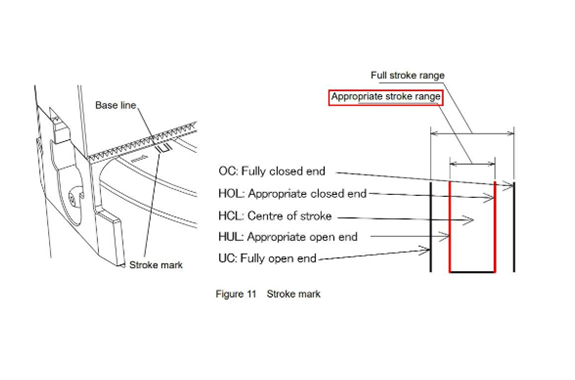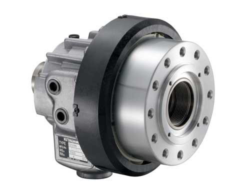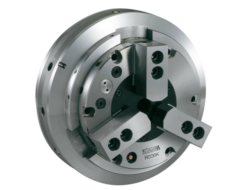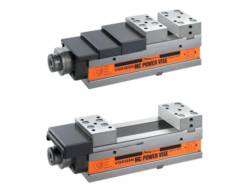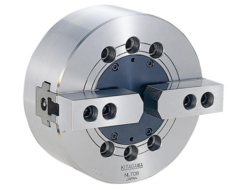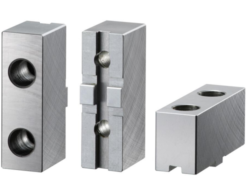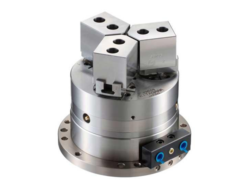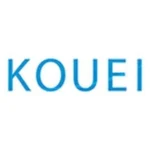Kitagawa Corporation.
Kitagawa BR Series Standard Chuck
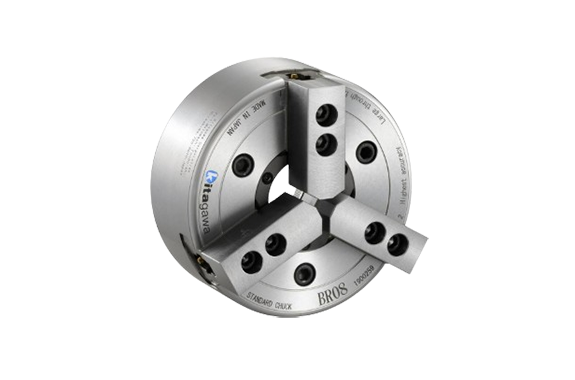
Manufacturer: Kitagawa Corporation.
Model: BR Series
Features
Gripping accuracy: ≤ 0.01 mm T.I.R.
Reduced jaw-lift
Compatible with Kitagawa B-200 & BB200 series
With Tnut-Plus: jaw repeatability ≤ 0.01 mm T.I.R.
With BR-AJC-M (quick jaw change): reduced setup time, repeatability ≤ 0.01 mm T.I.R.
Note: Values measured at 10 mm above Kitagawa standard soft jaw, using a test bar.
For BR12 only: Both accuracies ≤ 0.015 mm T.I.R.
Based on internal testing standards.
Specifications
| Model | BR05 | BR06 | BR08 | BR10 | BR12 |
|---|---|---|---|---|---|
| Through-hole (mm) | 33 | 53 | 66 | 81 | 106 |
| Gripping Range (mm) Max. | 135 | 170 | 210 | 254 | 315 |
| Gripping Range (mm) Min. | 7 | 16 | 22 | 31 | 35 |
| Jaw Stroke (Diameter) (mm) | 5.4 | 5.5 | 7.4 | 8.8 | 10.6 |
| Plunger Stroke (mm) | 10 | 12 | 16 | 19 | 23 |
| Max. Draw Bar Pull Force (kN) at OD Gripping | 16.6 | 23 | 35 | 49 | 60 |
| Max. Draw Bar Pull Force (kN) at ID Gripping | 8.3 | 11.5 | 17.5 | 24.5 | 30 |
| Max. Static Gripping Force (kN) at OD Gripping | 36 | 58.5 | 90 | 123 | 156 |
| Max. Static Gripping Force (kN) at ID Gripping | 18 | 29.3 | 45 | 61.5 | 78 |
| Max. Speed (min⁻¹) | 8000 | 6000 | 5000 | 4500 | 3500 |
| Dynamic Gripping Force at Max. Speed (kN) | 15.5 | 22.5 | 36 | 44 | 53 |
| Moment of Inertia (kg·m²) | 0.015 | 0.052 | 0.14 | 0.32 | 0.80 |
| Net Weight (kg) | 6.2 | 12.8 | 22.2 | 35.8 | 57.0 |
| Matching Cylinder | F0933H | SR1453C SS1453K | SR1566C SS1666K | SR1781C SS1881K | SS2110K |
| Matching Soft Jaws | Standard Extra Tall | Standard Extra Tall Small diameter gripping | Standard Extra Tall Small diameter gripping | Standard Extra Tall Small diameter gripping | Standard Extra Tall Small diameter gripping |
| Matching Hard Jaws | HB04N1 | HB06A1 HB06B1 | HB08B1 HB08N1 | HB10A1 | HB12N1 |
| Tnut-Plus (Option) | TN05PLUS | TN06PLUS | TN08PLUS | TN10PLUS | TN12PLUS |
Note:
The blue 3D data represents the jaw positions at the fully open (UC) and fully closed (OC) ends for both Parasolid and STEP.
The pink 3D data represents the jaw positions at the centre of stroke (HCL), the appropriate open end (HOL) and the appropriate closed end (HUL) for both Parasolid and STEP.
Jaw stroke
A stroke mark to check the jaw stroke position is stamped on the No. 1 jaw part on the body.
When the jaw is at the open end, the base line of the master jaw is aligned with the outer line of the full stroke range as shown in Figure 11.
The base line moves across the full stroke range when the jaw is opened / closed. However, the base line must be within the appropriate stroke range when the chuck grips a workpiece.